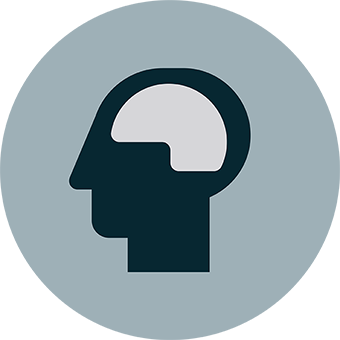
The Core Story of Adolescence is a set of connected ideas that are key to understanding adolescent development. It communicates evidence-based information from the Center for the Developing Adolescent, placing current scientific understanding of adolescent development in a narrative form and applying the framing recommendations to the story they collectively tell. It also extends this information to explicitly talk about structural inequities.
We should use this Core Story as often as possible in all public facing materials. It includes all of the well-framed information people need to understand, to support and even to demand policies that would improve the lives of all adolescents.
Adolescence is a time of remarkable opportunity and growth. From around age 10 to about 25 Always name an age range or stage in life since people have a fuzzy understanding of when adolescence occurs. , we discover, learn from, and adapt Use discovery metaphors to explain how they benefit from exploration. to the world around us. We forge our sense of who we are and who we aspire to be. We learn to make decisions, manage our emotions, and create deeper connections with peers and others in our communities. We also build resilience, and develop interests, passions, and meaningful goals that shape our adult lives. Our developing brains are well suited to these tasks, but too often the systems that serve us are not. Adults working to support young people must transform dysfunctional and discriminatory systems to ensure that ALL of us have the support we need to explore, discover, and become a force for good in our communities and society Always point out that adolescents are building stronger communities. , during adolescence and as we transition to adulthood Focus on future benefits. .
Along with this script, you can download a set of slides that you can use at the beginning of presentations that will help you tell this Core Story as often as possible.
Changing the Narrative
Scientific research tells us that the years between childhood and adulthood are an amazing window of opportunity to establish positive trajectories for all adolescents and for the world they will someday lead.
But this perspective is not always part of the public dialogue. Instead the current narrative focuses on negative stereotypes and misapprehensions. The popular story of risk and vulnerability creates barriers to effective legislation, policies, and programs for adolescents.
We need to change the narrative by reframing adolescence.
What is framing and why does it matter?
Framing is about making choices—what we say, how we say it, and sometimes what we don’t say. The suggestions here offer choices we can and should make when talking about adolescents if they want to build support for positive youth development.
When we frame an issue, we provide a different lens for an audience to view a subject. Framing connects what we want to communicate with people’s existing values and worldviews so they can see an issue from a new perspective.
To frame an issue, we need to:
-
Know what we are up against, and how to get around it, by understanding how people already think and feel about adolescence. Read What to Do to learn more.
-
Make deliberate choices about what to emphasize, what to explain, and what to leave unsaid. The Six Strategies for Framing Adolescent Development guides you through these choices.
-
Trigger certain ways of thinking and bypass others. See the Do’s and Don’ts for guidance on how to navigate around unhelpful assumptions and mindsets.
-
Give your audience ways to think differently. The Discovery Metaphor Card gives you ideas for how to be creative as you work to build public understanding.






